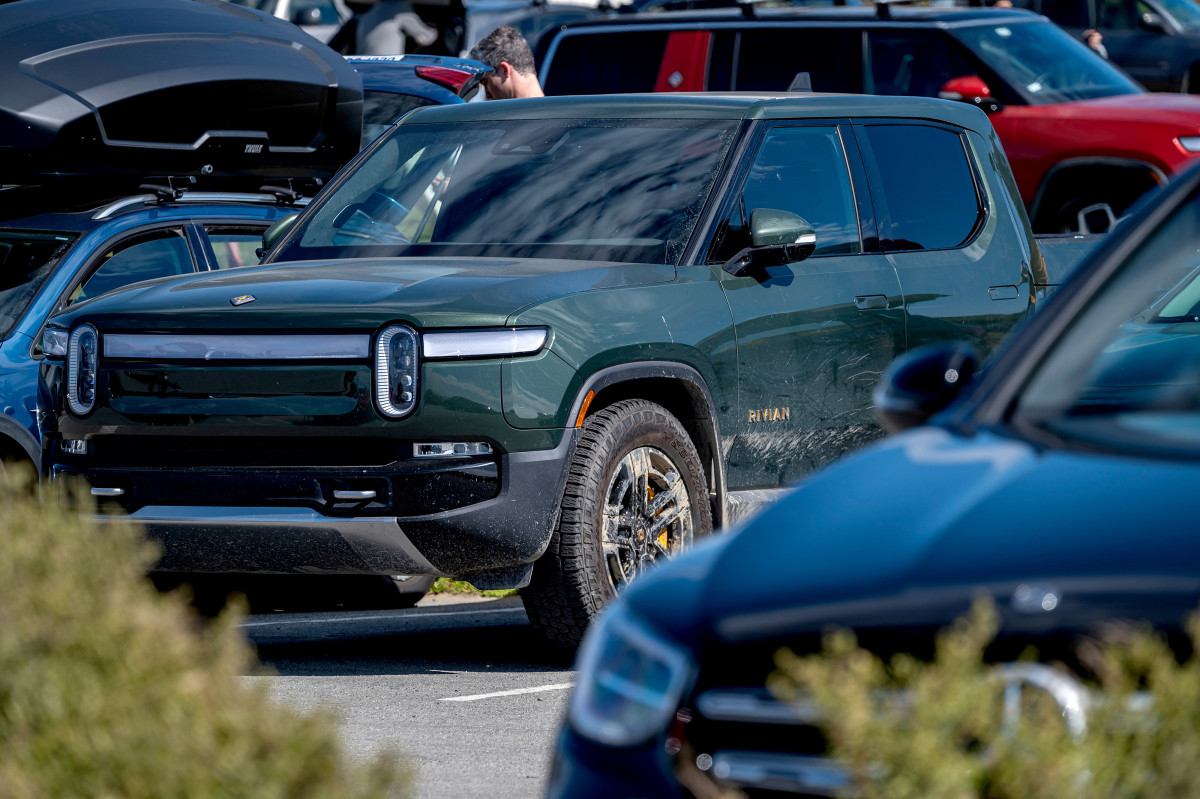
It's another week in the automotive industry, and analysts are scrutinizing General Motors (GM) stock. Citibank has some color on some Chinese EV brands, Morgan Stanley is not optimistic about Rivian (RIVN) and Ford (F) , and Tesla (TSLA) bulls are ready to let loose.

Motors Generally [Not so] Good
Last week, Bank of America analyst John Murphy wrote in a note that General Motors is looking to show that it is headed in the right direction within the evolving automotive industry.
He wrote that he expects GM to unveil much more of its EV strategy "with a greater emphasis on hybrid technology" and to hear more about GM's plans to revitalize its Cruise robotaxi service, which might be meaningfully fruitful down the line.
"Longer-term, we think robotaxi services run by automakers such as GM are inherently advantaged as they could scale more quickly and have more control of the entire experience from car design to car features to driving performance, among other advantages," Murphy wrote.
However, for every bull, there is a bear. That bear, in this case, is Bernstein's lead autos analyst, Daniel Roeska.
In a note on Sept. 23, he downgraded GM stock from Outperform to Market Perform and cut its price target from $54.50 to $53, citing economic concerns and its EV plans as reasons for the lowered expectations.
“We think there is a risk the company will announce additional capital requirements during its October CMD [Capital Markets Day]. We want to wait and see which updates GM shares," Roeska wrote in his note titled "Let's wait and see."
Related: The Buick Envista is America's wake-up call for Chinese cars
First, he brought up the problem of inventory, citing that "inventories are getting pretty high, currently standing at 70 days." While 70 days is not Stellantis-level inventory surpluses, Roeska fears that this threshold is enough for pricing discounts as continued inventory growth continues into 2025—which might not be good for its bottom line.
Also, he feels that the imminent EV slowdown will affect its goals. This year, GM seeks to make and sell 200,000 EVs by the end of 2024, and getting to that goal may be impossible.
“We expect the company to further lower its [EV] guidance. As a result, variable profit on EVs will be pushed back, and EBIT targets will be delayed to next year at best,” he wrote.
China and the Young Americans
Despite not selling many cars in the United States, Morgan Stanley's Adam Jones believes that the People's Republic is so powerful that they do not have to sell much to impact Detroit's Big Three.
But even with the Biden Administration's recently proposed ruling on Chinese "connected car" technology, Jones points out that the Chinese are edging the U.S. on production—making nine million more vehicles than its population can buy, which is "upsetting the competitive balance in the West."
“Even if these units don’t end up directly on US shores, the ‘fungibility’ of lost share and profit by key US players adds pressure here at home," Jonas said in his note.
Related: The 10 cars with the most satisfied owners, according to Consumer Reports
This justification led him to downgrade GM stock from equal weight to underweight, Ford stock from overweight to equal weight, and Rivian stock from overweight to underweight. He also trimmed GM price targets from $47 to $42, Ford from $16 to $12, and Rivian from $16 to $13.
In his words, the industry downgrade is influenced "by a combination of international, domestic and strategic factors that we believe may not be fully appreciated by investors," including the fact that cars are "still out of reach for many households," citing credit conditions among other factors keeping Americans out of new cars.
As for Rivian, Jonas believes that the Irvine-based maker of electric pickups and SUVs is behind the curve on AI and autonomous vehicles, "which may be required to fulfill the technological underpinnings that attracted Volkswagen as a JV partner."

Bullish on Chinese Domestics
On Sept. 4, Citibank analyst Jeff Chung downgraded Li Auto stock from Buy to Neutral and decreased their price target from $26.20 to $21.60.
In his note, he raised concerns of Li Auto's (LI) increased competition from companies like Huawei and Denza, which may pressure the company to update its L7, L8, and L9 models sooner than expected.
Li Auto is used to updating cars quickly. Its first car, the Li ONE, had a market lifespan of just 16 months. The L7, L8, and L9 were introduced in 2022, and Chung anticipates the introduction of their replacement models by 2025.
However, Jeff Chung may have also had an about-face. In a note published on Sept. 24, Chung raised the price target on the stock from $21.60 to $25,50, citing stronger delivery estimates after a “sector sales beat” in the summer.
In August 2024, Li Auto delivered 48,122 vehicles, an increase of 37.8%.
Speaking of increased sales and delivery, Chung used this reason to raise the target price of XPeng (XPEV) from $8.90 to $10.30.
He thinks that newly released models like the MONA M03 will contribute to increased deliveries that may amount to 207,000 units this year, 322,000 in 2025 and 405,000in 2026.
More Automotive:
- The Buick Envista is America's wake-up call for Chinese cars
- Ford CEO says he's sick and tired of making 'boring' cars
- Toyota rebuffs attack as it follows Ford as new anti-DEI target
Who let the [Tesla Bulls] out?
Tesla has a loaded week ahead of it on October 10. On the day itself, all eyes will be on Warner Bros. Studios, where the anticipated "Robocab" is expected to be revealed. However, analysts are also hyper-focused on another day that week: October 8, when IB analysts will hyper-analyze the Musk-led EV automaker's Q3 delivery results.
On September 24, Piper Sandler analyst Alexander Potter estimates 459,000 deliveries for Q3 2024, a 3.3% quarterly growth and 5.4% year over year. In a Sept. 26 note, Deutsche Bank analysts predicted an estimated 460,000-465,000 units.
In a September 27 note, Wedbush's Dan Ives wrote that he believes deliveries "will come in above the Street’s 462k unit bogey with whisper numbers around the 465k—470k range," noting that this will provide a solid rebound into the second half of 2024.
Ives and other analysts cite that China may have an outsized role in all this. Ives mentions that Tesla's "favorable leasing/financing terms" may contribute to what it sees as "significant growth" in the region.
However, this only provides a backdrop into what Ives sees as most important.
"With the upcoming Robotaxi event expected to provide some notable updates on the company around FSD, AI, and the company’s future, the next phase of the Tesla growth story is around autonomous, Robotaxis, and AI playing out for the Tesla ecosystem over the coming year," Ives wrote. "In our view, that vision is underway and on the doorstep just a few weeks out from the 10/10 Robotaxi event, which we will be attending."
Piper maintains an overweight rating for Tesla, while Deutsche Bank maintains a buy rating for Tesla with a $295 price target. Wedbush maintains its Overperform rating and $300 price target.
Related: Veteran fund manager sees world of pain coming for stocks







